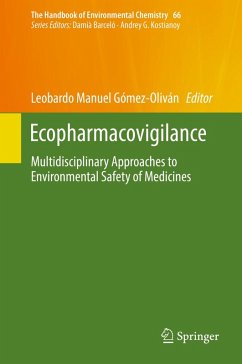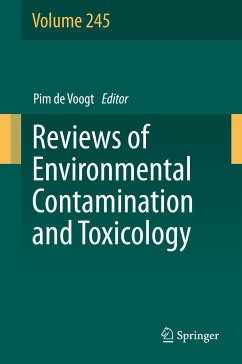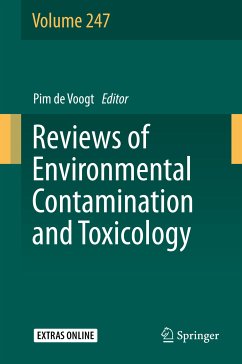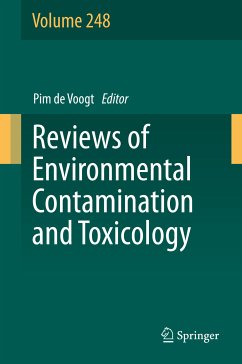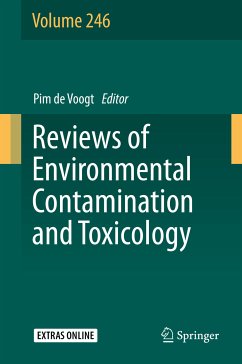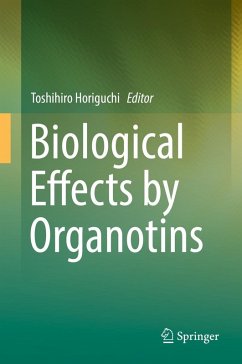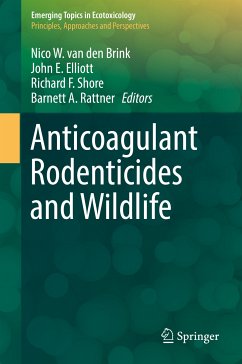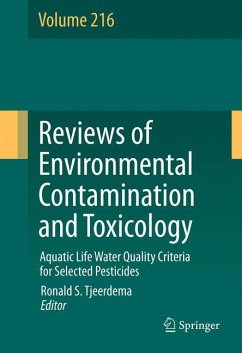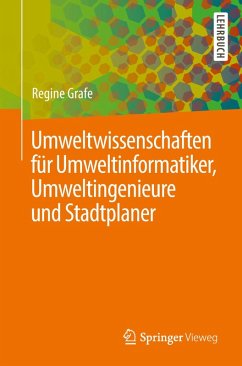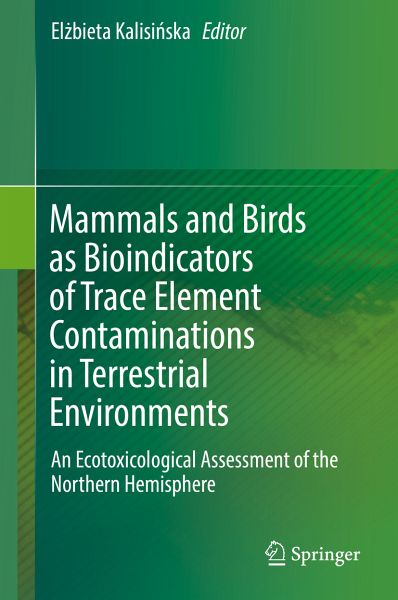
Mammals and Birds as Bioindicators of Trace Element Contaminations in Terrestrial Environments (eBook, PDF)
An Ecotoxicological Assessment of the Northern Hemisphere
Redaktion: Kalisinska, Elzbieta

PAYBACK Punkte
80 °P sammeln!
The population explosion that began in the 1960s has been accompanied by a decrease in the quality of the natural environment, e.g. pollution of the air, water and soil with essential and toxic trace elements. Numerous poisonings of people and animals with highly toxic anthropogenic Hg and Cd in the 20th century prompted the creation of the abiotic environment, mainly in developed countries. However, the system is insufficient for long-term exposure to low concentrations of various substances that are mainly ingested through food and water. This problem could be addressed by the monitoring of ...
The population explosion that began in the 1960s has been accompanied by a decrease in the quality of the natural environment, e.g. pollution of the air, water and soil with essential and toxic trace elements. Numerous poisonings of people and animals with highly toxic anthropogenic Hg and Cd in the 20th century prompted the creation of the abiotic environment, mainly in developed countries. However, the system is insufficient for long-term exposure to low concentrations of various substances that are mainly ingested through food and water. This problem could be addressed by the monitoring of sentinels - organisms that accumulate trace elements and as such reflect the rate and degree of environmental pollution. Usually these are long-lived vertebrates - herbivorous, omnivorous and carnivorous birds and mammals, especially game species. This book describes the responses of the sentinels most commonly used in ecotoxicological studies to 17 trace elements.
Dieser Download kann aus rechtlichen Gründen nur mit Rechnungsadresse in A, B, BG, CY, CZ, D, DK, EW, E, FIN, F, GR, HR, H, IRL, I, LT, L, LR, M, NL, PL, P, R, S, SLO, SK ausgeliefert werden.



